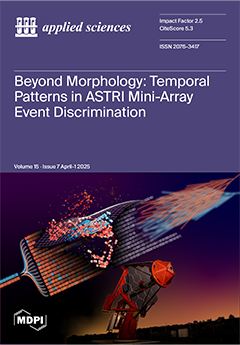The aim of this study was to see if there are any associations between mental health, Body Mass Index (BMI), and physical exercise (PE) in young Portuguese adults. The sample consisted of 414 people aged between 18 and 25 years old. A sociodemographic
[...] Read more.
The aim of this study was to see if there are any associations between mental health, Body Mass Index (BMI), and physical exercise (PE) in young Portuguese adults. The sample consisted of 414 people aged between 18 and 25 years old. A sociodemographic questionnaire designed for this study and the Mental Health Inventory were used. To analyze the results, the total sample was divided according to the criteria “BMI ≥ 5 kg/m
2”; “BMI < 25 kg/m
2”; “does not practice PE”; and “practices PE”, and sample groups were formed with these names. It was found that there was an association between the dimensions of the Mental Health Inventory and the average time spent practicing PE in the total sample (
r from 0.099 to 0.160) and in individuals with a BMI < 25 kg/m
2 (
r = 0.154 and 0.169). In individuals with a BMI ≥25 kg/m
2, there was an association between the ‘BMI’ and depression variables (
r = −0.174). In all groups, associations were found between the variables of age and BMI (
r from 0.120 to 0.216). There was also a significant effect of group (non-exercise vs. exercise groups) on the dependent variables, Λ = 0.972, F(5, 408) = 2.329,
p = 0.042, η
2p = 0.28. This study confirms the association between PE and mental health and suggests that BMI may have an influence on the appearance of depressive symptoms in young Portuguese adults.
Full article





